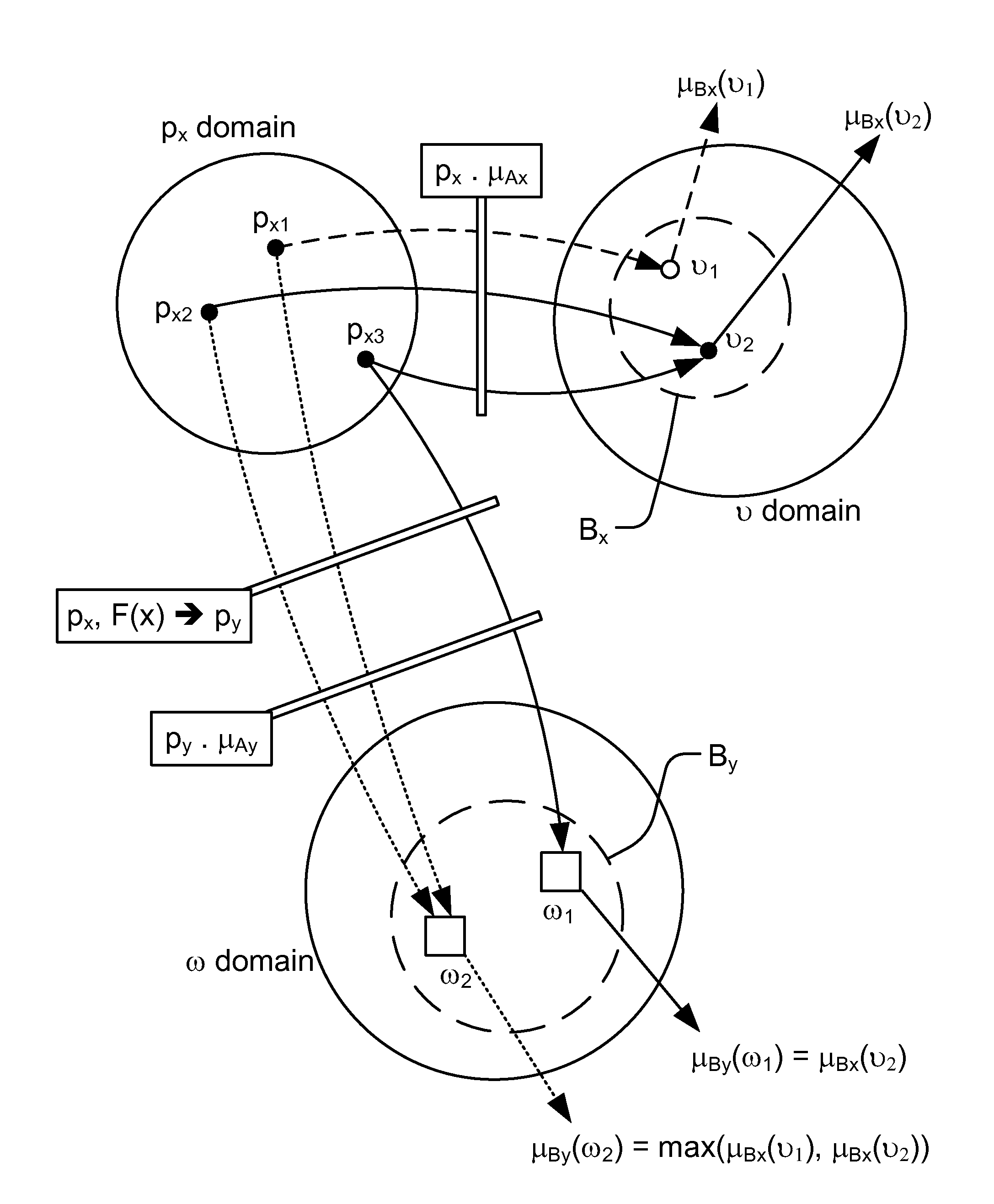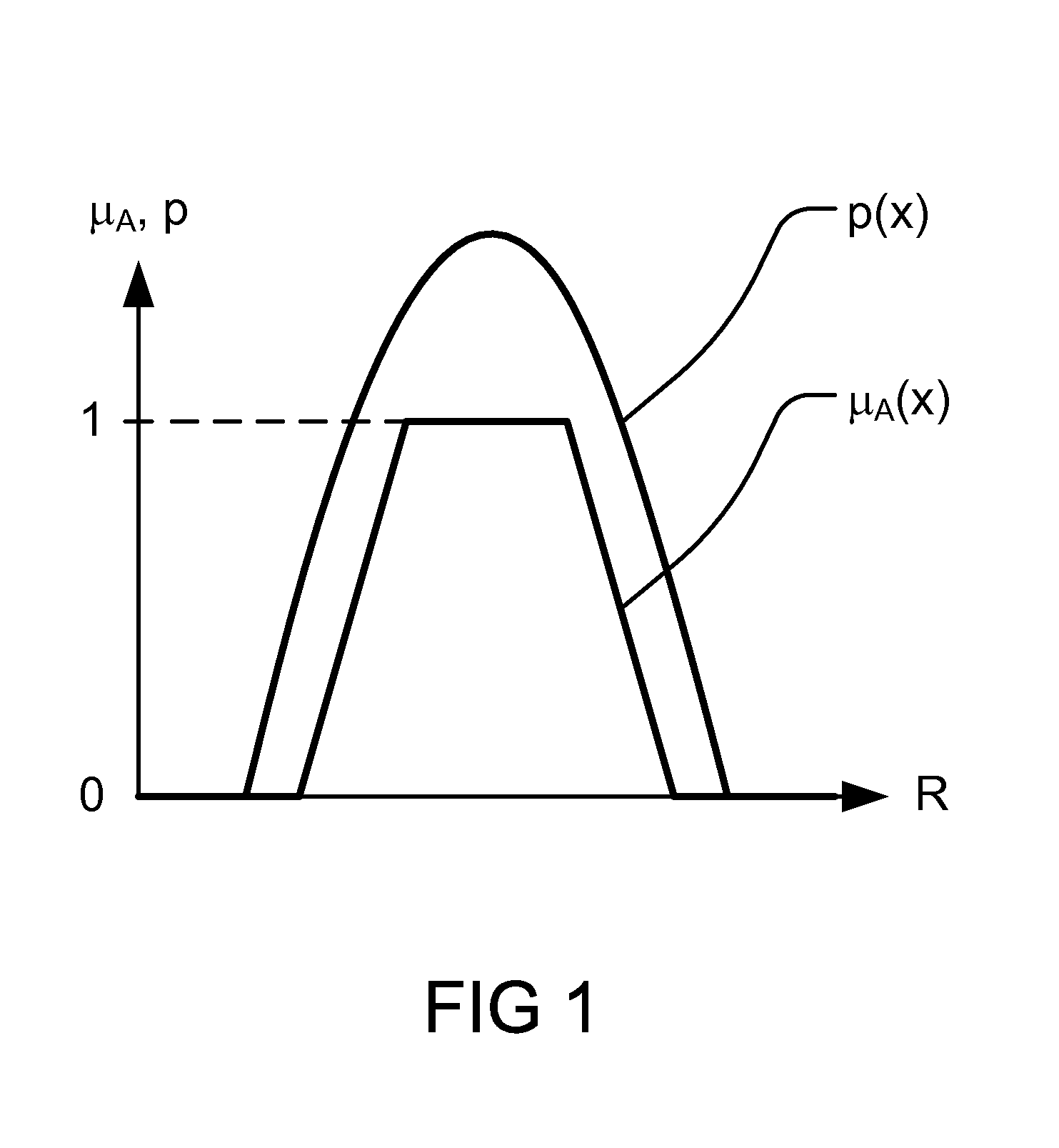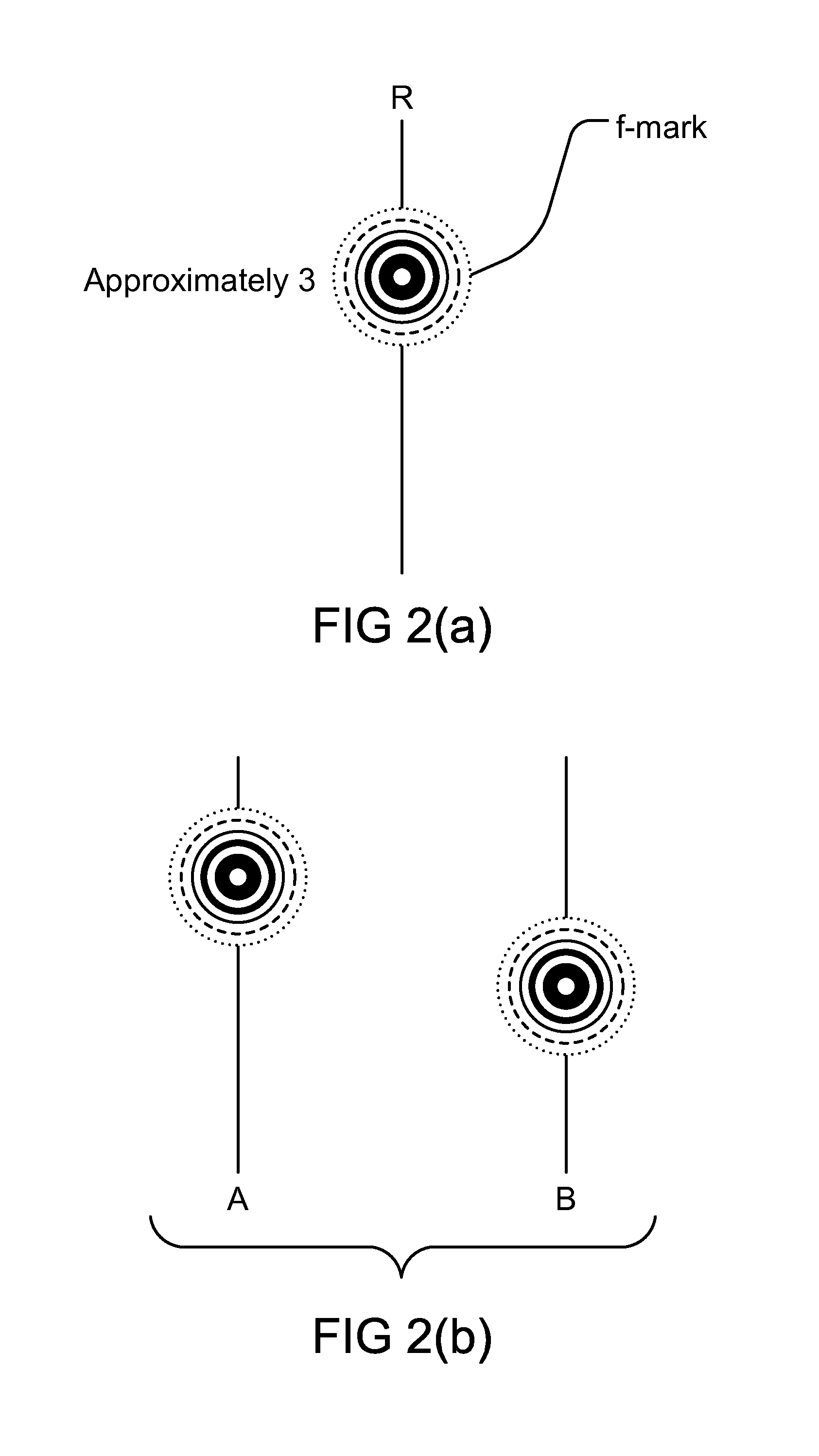Methods and systems for applications for Z-numbers
- Summary
- Abstract
- Description
- Claims
- Application Information
AI Technical Summary
Benefits of technology
Problems solved by technology
Method used
Image
Examples
example 1
[0428]We are given this information (for anticipation and prediction): There probability that the price of oil next month is significantly over 100 dollars / barrel is not small.
[0429]Assume that the ticket price for an airline from Washington D.C. to New York is in the form of (Y=F(X)=a1·X+a2), where X is the next month's estimated price of oil (in dollars / barrel) and Y is the ticket price (in dollars). For this example, further assume that a1=1.5 and a2=150, i.e., Y=1.5 X+150. Then, we have the following questions:
[0430]q1: What is the Price of the Ticket from Washington Dc to New York?
[0431]X represents (the price of oil the next month), Ax is (significantly over 100 dollars / barrel) and Bx is (not small). Then, (X, Ax, Bx) is a Z-valuation restricting the probability of (X) the price of oil the next month. In this example, as depicted in FIG. 12(a), significantly over is represented by a step-up membership function membership function, μAx, with a fuzzy edge from 100 to 130. Also, ...
example 2
[0486]In one embodiment, a fuzzy rules database includes these two rules involving Z-valuation (e.g., for a rule-based analysis / engine). Rule 1: If the price of oil is significantly over 100 dollars / barrel, the stock of an oil company would most likely increase by more than about 10 percent. Rule 2: If the sales volume is high, the stock of an oil company would probably increase a lot. There is also this input information: The price of oil is at 120 dollars / barrel; the sales volume is at $20 B; and the executive incentive bonus is a function of the company's stock price. The query or output sought is:
[0487]q4: What is the Likelihood of High Executive Incentive Bonuses?
[0488]In one embodiment, the rules engine / module evaluates the truth value of the rules' antecedents, e.g., after the precisiation of meaning for various fuzzy terms. For example, the truth value of Rule 1's antecedent, the price of oil is significantly over 100 dollars / barrel is evaluated by taking the membership func...
example 3
[0495]In one embodiment, e.g., in a car engine diagnosis, the following natural language rule “Usually, when engine makes rattling slapping sound, and it gets significantly louder or faster when revving the engine, the timing chain is loose.” is converted to a protoform, such as:
[0496]IF(type(sound(engine))isRattlingSlappingAND((level(sound(revved.engine)),level(sound(engine)))issignificantly.louderOR(rhythm(sound(revved.engine)),rhythm(sound(engine)))issignificantly.faster))THEN(Prob{(tension(TimingChain)isloose)}isusually).
[0497]In one embodiment, a user, e.g., an expert, specifies the membership of a particular engine sound via a user interface, e.g., the user specifies that the truth value of the engine sound being Rattling-Slapping is 70%. In one embodiment, the user specifies such truth value as a fuzzy set, e.g., high, medium, very high. In one embodiment, a Z-mouse is used to specify the fuzzy values (i.e., membership function) of various attri...
PUM
 Login to View More
Login to View More Abstract
Description
Claims
Application Information
 Login to View More
Login to View More - R&D
- Intellectual Property
- Life Sciences
- Materials
- Tech Scout
- Unparalleled Data Quality
- Higher Quality Content
- 60% Fewer Hallucinations
Browse by: Latest US Patents, China's latest patents, Technical Efficacy Thesaurus, Application Domain, Technology Topic, Popular Technical Reports.
© 2025 PatSnap. All rights reserved.Legal|Privacy policy|Modern Slavery Act Transparency Statement|Sitemap|About US| Contact US: help@patsnap.com



